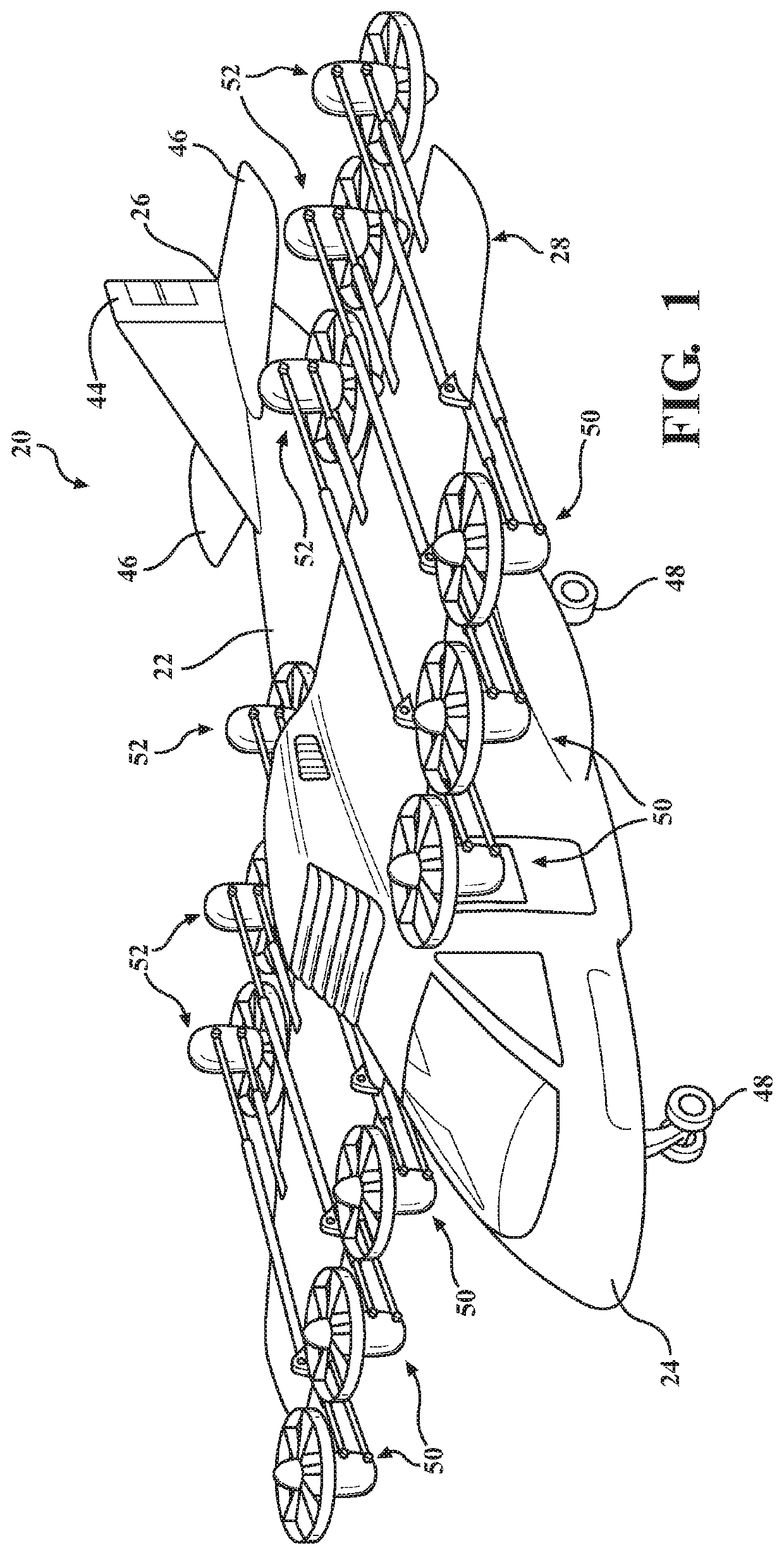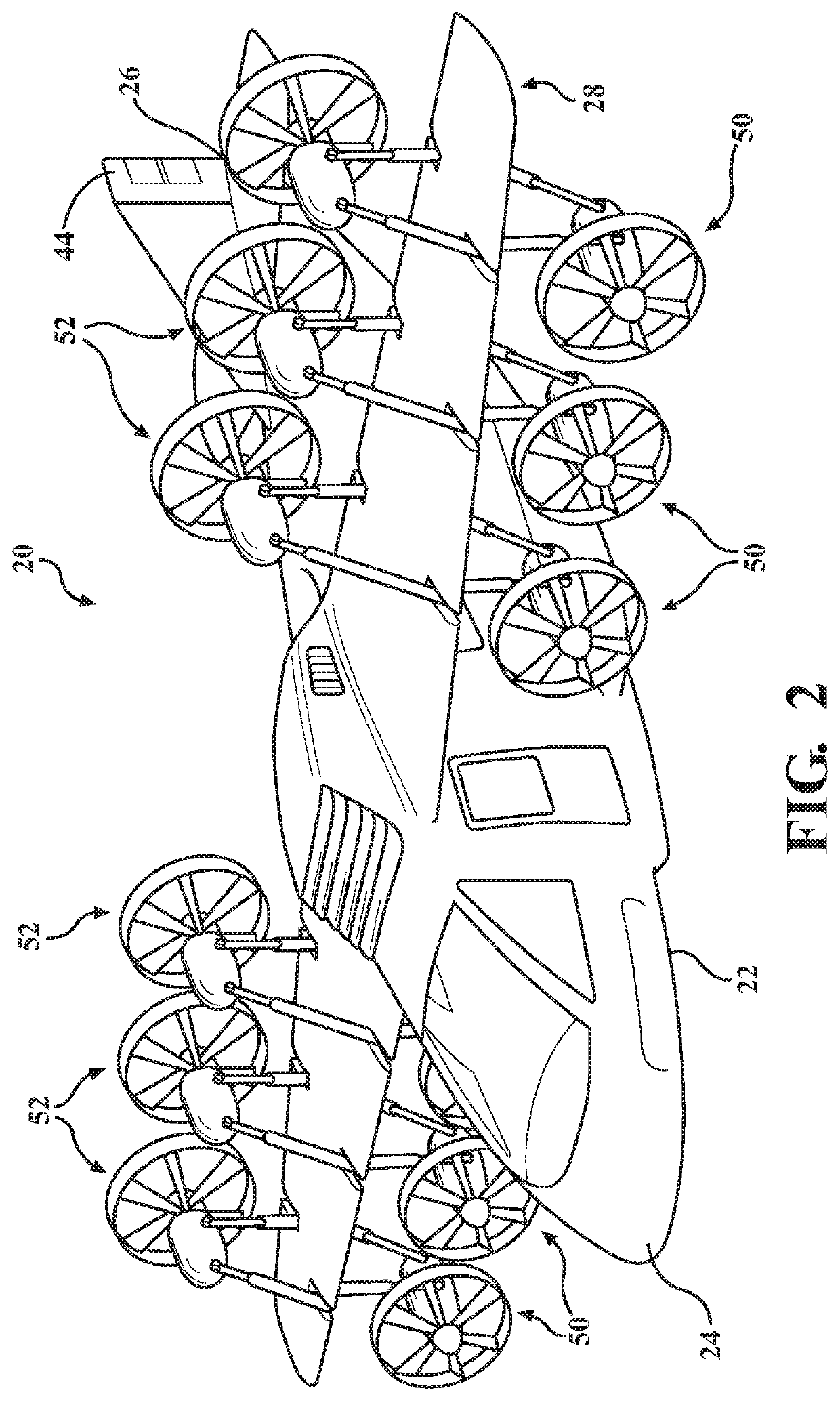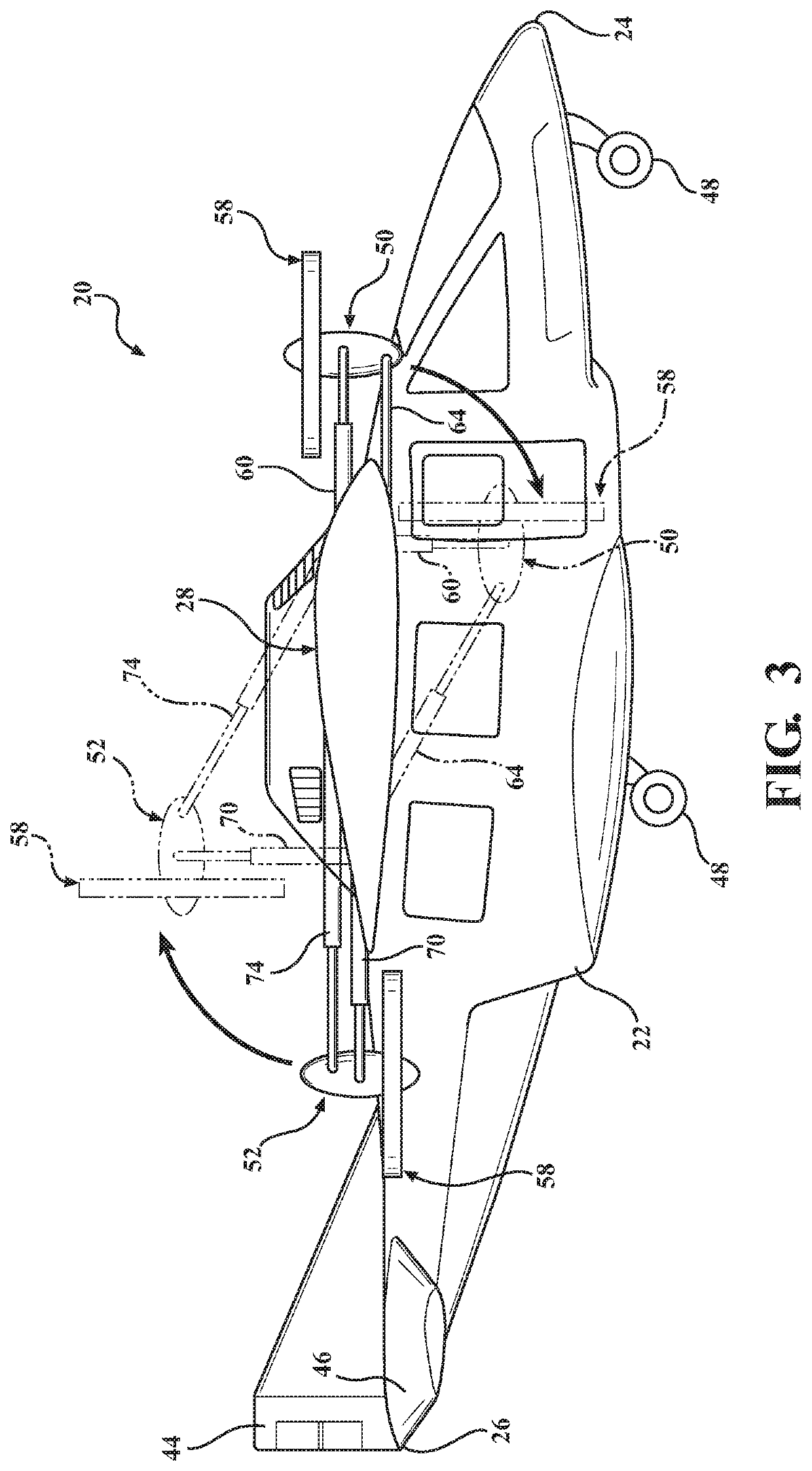Vertical take off and landing fixed wing aircraft
a fixed wing aircraft and vertical takeoff technology, applied in aircrafts, vertical landing/takeoff aircraft, vehicles, etc., can solve the problems of affecting the safety of air commerce and/or aerial combat, so as to reduce the induced drag, improve the low vibration harmonics, and reduce the effect of induced drag
- Summary
- Abstract
- Description
- Claims
- Application Information
AI Technical Summary
Benefits of technology
Problems solved by technology
Method used
Image
Examples
Embodiment Construction
[0034]An exemplary fixed wing aircraft assembly is generally shown at 20 in FIGS. 1-3. The aircraft assembly 20 is of the type capable of vertical take-off and landing (VTOL) maneuvers and forward flight. FIG. 1 shows the aircraft 20 configured for VTOL maneuvers, whereas FIG. 2 shows the aircraft 20 configured for forward flight.
[0035]The aircraft 20 may take many different forms and is shown in FIGS. 1-3 as having a somewhat conventional airframe comprised an elongated fuselage 22 extending between nose 24 and tail 26 ends. The airframe includes at least one main wing, generally indicated at 28. The main wing 28 is fixed to the fuselage 22 between the nose 24 and tail 26 ends. The main wing 28 can, of course, take a wide variety of forms. In one contemplated embodiment (not shown) the main wing 28 is part of a multi-wing set, e.g. a bi-plane or tri-wing plane configuration. In another contemplated embodiment (not shown) the main wing 28 is mounted under the fuselage rather than ab...
PUM
 Login to View More
Login to View More Abstract
Description
Claims
Application Information
 Login to View More
Login to View More - R&D
- Intellectual Property
- Life Sciences
- Materials
- Tech Scout
- Unparalleled Data Quality
- Higher Quality Content
- 60% Fewer Hallucinations
Browse by: Latest US Patents, China's latest patents, Technical Efficacy Thesaurus, Application Domain, Technology Topic, Popular Technical Reports.
© 2025 PatSnap. All rights reserved.Legal|Privacy policy|Modern Slavery Act Transparency Statement|Sitemap|About US| Contact US: help@patsnap.com



